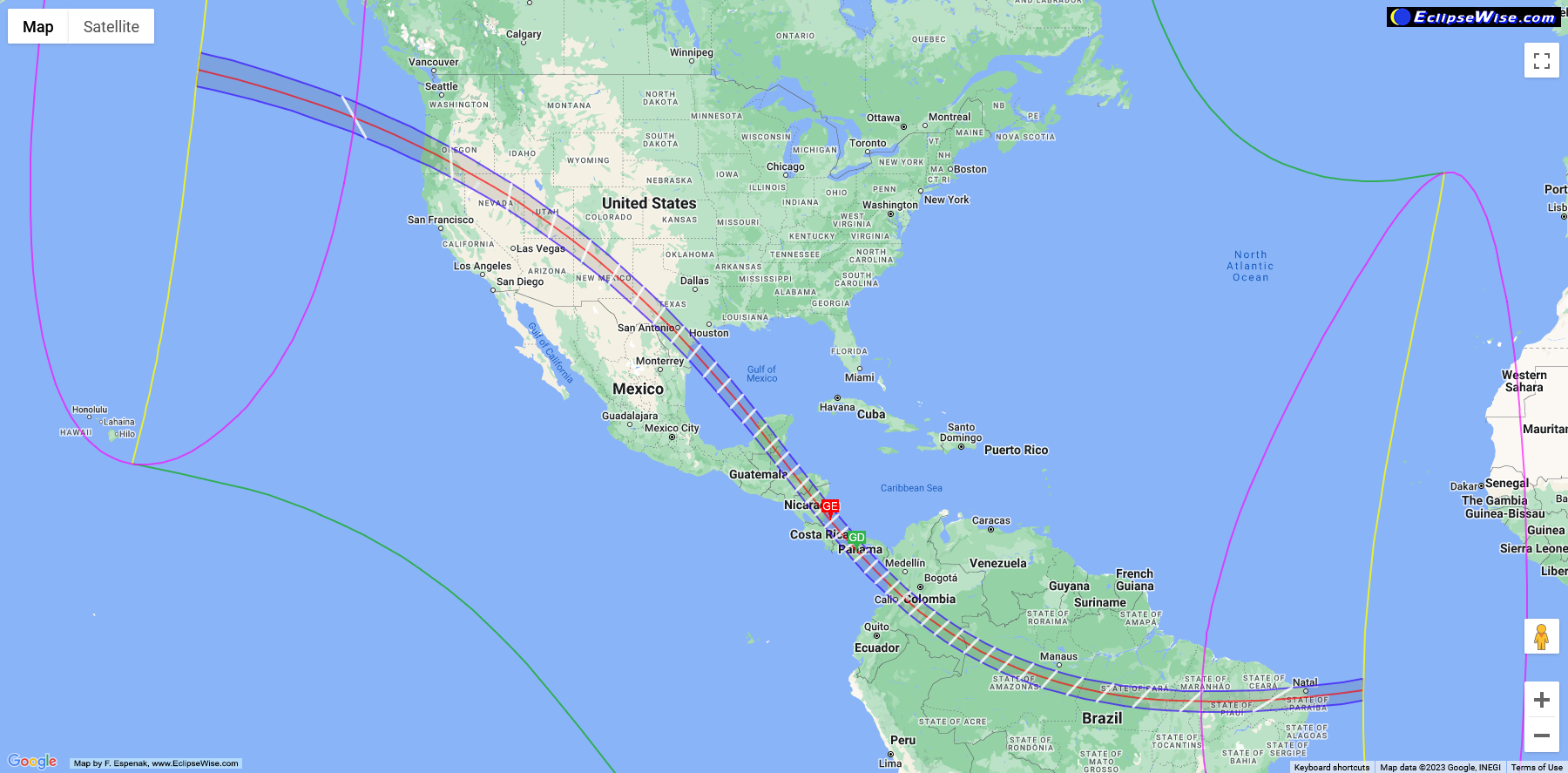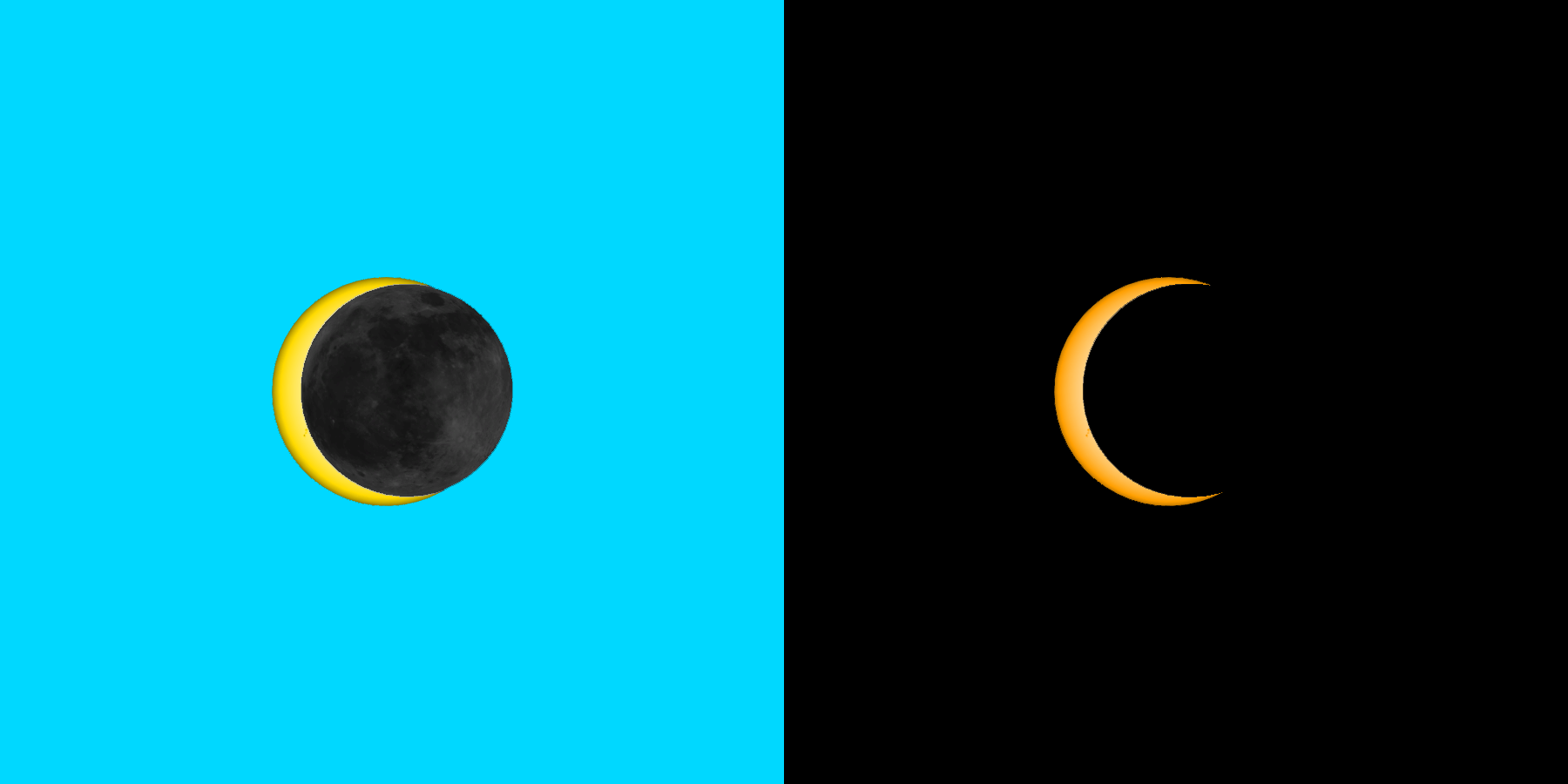
The Annular Solar Eclipse of Saturday, October 14th, 2023
This is the first solar eclipse visible from Idaho since August 21st, 2017. For viewers along a path that runs from the Oregon coast to the easternmost point of Brazil, it will appear as an annular ("ring of fire") eclipse. Except for the extreme southwest corner of Owyhee County, all Idaho locations will see a partial eclipse, with the sun appearing as a crescent at maximum eclipse.

Map courtesy of Fred Espenak, owner of the "Mr. Eclipse" website.
Follow these solar eclipse viewing safety rules to avoid permanent eye damage:
- Proper filters (such as those available very inexpensively from the Herrett Center Store) MUST be used to view this eclipse safely! Such filters are designed to go directly over the eyes; DO NOT use them between your eye and any form of magnifying optics, like binoculars or a telescope.
- Supervise small children who may be tempted to stare at the sun during the eclipse, since their normal instinct to stop looking due to discomfort will be diminished due to the reduced brightness (although the potential for permanent eye damage is not diminished).
- Welding glass must be rated at #14 or higher to prevent permanent eye damage. Stacking lower-rated welding glass (e.g. a #10 and a #4) does NOT provide equivalent protection as a #14! Just because you don't experience pain doesn't mean your eyes are not being damaged!
- If you use an electronically-darkening welding helmet, be sure it is rated to provide #14 or higher equivalent protection.
- Sunglasses are completely inadequate protection, regardless of any lack of perceived discomfort.
- Do not use solar filters which attach to a telescope's eyepiece. (In fact, if you have one of these eyepiece solar filters, throw it away—it's not safe!) The solar heat concentrated on them can cause them to crack suddenly and allow damaging light to reach the eye. The only safe solar filters for telescopes and binoculars filter the sunlight before it enters the optics, not after!
- Completely exposed and properly developed black-and-white negative film may be used as a filter (but seriously, who has any of that around any more?)
- Make a simple pinhole projector by poking a small hole in a piece of cardboard, and casting the eclipsed sun's image onto another piece of cardboard (white works best.) DO NOT try to look through the pinhole!
- Instructions for building an optimum pinhole projector can be found here (Microsoft Word document).

Relative positions of the sun and moon at mid-eclipse (l) and actual appearance of the sun through a solar filter at mid-eclipse (r), as seen from Twin Falls, Idaho, USA.
Eclipse timeline (all times listed are in Mountain Daylight Time (UT-6 hrs.) for Twin Falls, Idaho, USA), calculated by the Solar Eclipse Calculator & Diagram by Xavier Jubier:
- 09:00:00 AM — Centennial Observatory opens for telescope viewing, weather permitting.
- 09:08:14 AM — First contact. A tiny, growing "bite" begins to appear on the upper right quadrant of the sun as the moon begins its excursion across the solar disk.
- 10:25:33 AM — Mid-eclipse. The moon reaches its maximum coverage of the solar disk (85%); the sun appears as a thin crescent with "horns" pointing to the right (see diagram, above). See if you can spot Venus with the unaided eye by standing where the sun is hidden by a building but the view to the south is unobstructed. Venus will look like a white dot high in the sky, due south. In a telescope, it will appear as a quarter phase (half illuminated).
- 11:50:38 AM — Last contact The last, tiny "bite" of the moon's silhouette disappears from the lower left quadrant of the solar disk, signaling the eclipse's end.
- 12:00:00 PM — Observatory closes.